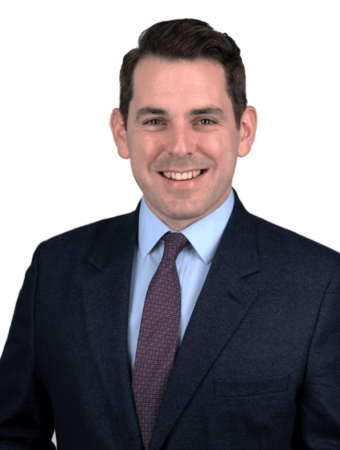When I was a child, my father worked for a company that specialised in offshore helicopter transportation services. Thanks to headlines around the panama papers, paradise papers and panorama exposés, this may conjure up images of the super-rich and their advisers flying around tax havens in the Caribbean. In fact, they were actually ferrying blue collar workers to offshore oil and gas rigs.
So the word ‘offshore’ is not necessarily synonymous with the super-rich. In fact, offshore life assurance bonds have been a well-trodden path for investors looking to defer tax on their investments. They allow investments to grow without being hampered by Income or Capital Gains Tax.
Quite often investors will use an offshore bond if they have already fully utilised their pension and ISA allowances. They allow for tax-deferred growth, similar to a pension, but there is no limit to the amount that can be invested. So, it stands to reason that when the Chancellor announced that the amount a high earner could annually contribute to their pension (Annual Allowance) was to be tapered from 6th April 2016, he was potentially channelling a new wave of investors towards offshore bonds.
To give a brief and simplistic over view of how Annual Allowance tapering works in practice, if you exceed the ‘Threshold’ income (Income – Pension Contributions1) limit of £110,000, for every £2 over your ‘Adjusted’ income (Income + Pension Contributions) limit of £150,000 you will lose £1 of your Annual Allowance. This tapers down to a minimum of £10,000 by the time you reach £210,000 of ‘Adjusted’ income. HMRC estimate that over 300,000 pension savers have ‘Threshold’ incomes of over £110,000 and thus are likely to be affected by Annual Allowance tapering2.
Up to now, investors who have been heavily tapered are likely to have been using their right to carry forward unused allowances from the previous 3 years to either maintain or optimise their pension contributions. But, for those investors, this rolling 3-year window is now coming to close and they are starting to look for alternatives.
| TY 2016/17 | TY 2017/18 | TY 2018/19 | TY 2019/20 | |
|---|---|---|---|---|
| Not Tapered | 13/14 | 13/14 | 13/14 | 13/14 |
| Not Tapered | 14/15 | 14/15 | 14/15 | 14/15 |
| Not Tapered | 15/16 | 15/16 | 15/16 | 15/16 |
| Tapered | 16/17 | 16/17 | 16/17 | 16/17 |
| Tapered | 17/18 | 17/18 | 17/18 | |
| Tapered | 18/19 | 18/19 | ||
| Tapered | 19/20 |
Key: Annual Allowance Carry Forward Available Unused Allowance Lost
It is worth making it absolutely clear that an offshore bond is not a ‘silver bullet’ to this problem. Among their key features there are more differences than there are similarities between offshore bonds and the more commonly used tax wrappers, pensions and ISAs. For example, unlike a pension, there is no tax relief on contributions or minimum age limit for withdrawals, and, unlike an ISA, withdrawals of gain/income are not tax free.
You can, however, withdraw up to 5% of original premium (capital invested) each year without triggering a tax liability, with any remaining allowance rolling up to the following year. So, from year 20 onwards you will be able to withdraw 100% of your original investment tax free. Any gain or income crystallised/withdrawn is taxed as savings income at the beneficiary’s marginal rate.
All of this means that, in the current tax year, an investor with no other taxable income could potentially utilise their Personal Allowance, Starting Rate Band for Savings Income and their Personal Saving Allowance to crystallise/withdraw £17,850 of accrued gain/income before any tax is due.
So, for certain investors, offshore bonds might be a suitable alternative for their long-term retirement savings/investments. But there are also a host of other options that any investor hindered by the tapering of Annual Allowance should consider:
- Funding ISAs to their maximum limits (including making gifts to their spouse)
- Funding a pension for a spouse
- A General Investment Account (GIA)
- Venture Capital Trusts
- Enterprise Investment Schemes
Which of these structures/strategies is most appropriate will depend on an individual’s circumstances, objectives and attitude to risk. So, if you are considering venturing in to unchartered waters, it is vital you seek expert advice. If you’d like help in charting the best course for your financial future, please get in touch. We’d love to speak with you.
—
1 Member contributions paid to money purchase and defined benefit occupational pension schemes, under relief at source or a net pay arrangement.
It is important to point out any employment income given through a salary exchange agreement set up after 8th July 2015 must be added back in when calculating your ‘Threshold Income’.
The other deductions include things like trade losses, share loss relief and gifts to charities. A full list of the deductions can be found at s.24 of the Income Tax Act 2007.
This article does not constitute financial advice. Individuals must not rely on this information to make a financial or investment decision. Before making any decision, we recommend you consult your financial planner to take into account your particular investment objectives, financial situation and individual needs. Past performance is not a guide to future performance. The value of an investment and the income from it may go down as well as up and investors may not get back the amount originally invested.









